Rosalind Franklin: Destroyed scientist
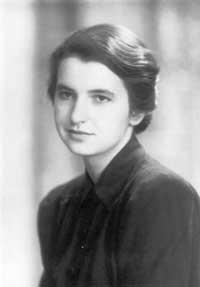
Rosalind Franklin died of ovarian cancer in 1958. He was a great scientist, an intelligent and intelligent woman. He paid special attention to everything he did and worked with prestigious scientists. He did not win the Nobel Prize, but there is no doubt that he deserved it.
Their data were fundamental to clarify the structure of DNA. Together with biologist Raymond Gosling, Rosalindi took very good pictures of X-ray diffraction. The best until then. This work deserves a special mention in the history of science, as from these photographs and data the scientists who officially found the structure of DNA, Watson and Crick, left.
It is a dark story, even more because Rosalindie could not defend his contribution. In 1968, eleven years after his death, James Watson published the famous book The Double Helix. In that text he treated Rosalind very badly, and his contribution was completely obscured. Rosalind was not liked by Watson. However, there are many paradoxes in this story. For example, today, in the talks given by Watson, Crick and Wilkins, Rosalind's work is extolled and the importance of these photographs and data is highlighted.
The Double Helix received numerous criticisms and Rosalind's work was unveiled by historians. How was the story of the life and work of this great scientist? What secrets were kept to hide their value?
DNA structure
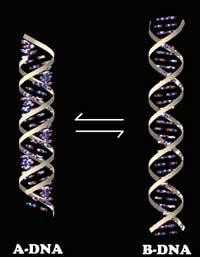
If we look at the time when Rosalindie conducted his main investigations, the consequences of World War II are evident. The Francoists were London Jews of high social level; after participating in the Great War and the European situation, political and social involvement was fundamental in this family. Rosalind was born in 1920, so he was nineteen when World War II broke out.
Worried about the war, he wanted to collaborate from the scientific field. France was taken by the Nazis and the risk of entering England was high. After the war, London was destroyed, it was a city to rebuild. Rosalindie studied physics, chemistry and mathematics in those hard times.
He also worked at the Laboratoire Central des Services Chimiques de l'Etat in Paris for three years, analyzing the structure of coal. But those happy times were over and moved to King's Colledge in London to investigate the structure of DNA. Year 1951. The hard work of two years was the key to the structure of DNA.
The discovery was made in 1953, but for Rosalindi that year it was time to escape. A paradox. At King's Colledge, Rosalind was about to find the structure. He lacked little. But the working environment was nothing pleasant to him. To say that I was not satisfied is little. He needed to flee.
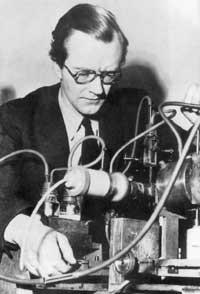
The main problem arises with his colleague Maurice Wilkins. They were not solved well. By their nature, Wilkins and Rosalind were contrary. Rosalindie could not cope with the situation. Over time the relationship between the two deteriorated. But it was not a matter of nature.
Just start working at King's Colledg, John. T. Physicist Randall, his boss, commissioned Rosalind to study the structure of DNA. Randall suspected that this molecule was important. The request was curious: Rosalindie knew nothing about biology. His research in Paris had nothing to do with DNA. But he answered yes and started working. Randall told him that he would investigate with Gosling, but that no one would do anything in that field, nor Maurice Wilkins.
Rosalindi and Gosling found that DNA had two forms, A and B, and passed from one to the other depending on the degree of humidity. Rosalind's work was abundant. Both he and Gosling designed and built a machine to analyze X-ray diffraction that allowed controlling the degree of humidity.
But Wilkins, in his occasionally external conferences, used photographs and Rosalind's results as an example of the research done in King's laboratories. There was the best research on DNA. In some of these talks they realized that both Watson and Crick DNA had to be helix shaped.
Angry

Rosalind was very angry. Wilkins and Crick were friends, so Wilkins informed the other of Rosalind's work. When the situation became unsustainable, Randall made the decision that Rosalindie and Wilkins would work separately with forms A and B, respectively.
Watson and Crick started working together at the Cavendish laboratory in Cambridge. They did not experiment, but simple theoretical models. The data came from external sources: published articles and work by Rosalind, both provided by Wilkins and read in the mandatory reports for the MRC.
DNA components were known, puzzle pieces, but it was difficult to put them in place. Rosalindie never speculated. He only used clear data. Until the sample of the form A I was investigating became B. Unintentionally. It was then that he obtained the famous photo number 51, the best photograph ever obtained. But as it was in form B, Rosalindie rejected it and advanced in form of A.
Thus, experimentally he discovered that DNA was a double helix, but he did not know how the two chains were grasped. On the other hand, he realized that phosphate groups are outside the propellers. Until everything is well understood, it would not publish anything.
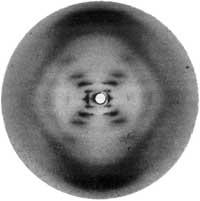
Watson and Crick made a three-string model with phosphate groups inside. Rosalindie, when he saw it, told them that this was impossible: in that structure there was no room for water molecules; phosphates should necessarily have from outside.
Then a curious thing happened: Randall and William Lawrence Bragg, head of Cambridge, came together and decided that the DNA field would only be investigated in King's Colledg. Watson and Crick were therefore banned from continuing the investigation.
In the United States, the prestigious chemist Linus Pauling, who discovered the helix of proteins, was studying the structure of DNA and published a solution. But it was wrong! They were three chains and phosphates were inside. Rosalindi also wrote to Pauling to explain what was wrong.
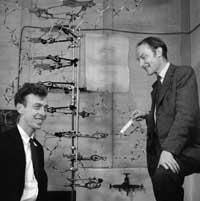
Watson and Crick, in view of Pauling's program, ignored the ban and made a new example of the structure of DNA, this time with two chains and phosphates on the outside. Watson then understood what Rosalind didn't understand: both chains grab a foothold. The key to understanding this was the work of Austrian Erwin Chargaff. Chargaff discovered that the four bases were equal in two. Watson made a direct interpretation of it, that is, they were organized by couples, but not in any way, but by forming certain couples.
Watson and Crick discovered the solution on February 28, 1953.
1962 Nobel Prize in Medicine Rosalind Franklin did not receive the Nobel Prize. The ultimate reason for not receiving it was death. The prize was never given to a deceased and Rosalind, when he had the opportunity to pick him up, was dead. However, if he had survived in 1962, would they give him the prize? There is the possibility of speculating about it. Just or not, Watson and Crick had 'priority'. They discovered the structure of DNA. That is: Rosalind data were used for this purpose. And this data was given mainly by Wilkins to Watson and Crick. He was very close to the Rosalind solution, but a couple of details were missing. On the one hand, he did not understand the relationship between the number of bases. These figures are equal by pairs because they are paired, so the chains are held. On the other hand, Rosalindi discovered the symmetry of DNA crystals, but failed to interpret it. The crystals had monocyclic symmetry, which meant that the two chains go in the opposite direction. If one goes from top to bottom, the other is organized from bottom to top. Rosalindi discovered everything else. Everything. But that was not enough to receive the Nobel Prize. Or yes? To speculate we must consider something else: The Nobel Prize is not awarded to more than three people (if it is not an organization that receives it). Therefore, as Watson and Crick had priority, there was another position, but only one. It is logical to think that Wilkins or Rosalindi should be in that position. However, it would be very difficult to leave Wilkins out to get Rosalind, but who deserved more? All this is only speculation; in December 1962, James Watson, Francis Crick and Maurice Wilkins received the Nobel Prize in Medicine. |
Technical service
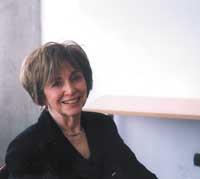
Brenda Maddox has just written the biography of Rosalind Franklin. American journalist and writer born in the UK. At the time when the structure of DNA was clarified, Maddox lived in the United States and her husband was editor of the journal Nature, so it has had a privileged starting point for historical research.
"He is a friend of the James Watson family and knew Crick from before," Maddox explained. "They helped me a lot in the research process and when I finished the draft of the book they read it. They have greatly respected the view of the book." Among other things, the book says that Watson had no ironic meaning and, of course, Watson himself disagrees, although he respected that opinion.
Three great articles The discovery of DNA was announced in the journal Nature. In the same number they published three articles in a certain order. In the first, Watson and Crick managed not to cite Rosalind and his data. The second was that of Wilkins and two other companions, on theoretical calculations on propellers, which served to participate in success. In the third, among other things, Rosalinde and Gosling published photo 51 stating that their results ratified the model of Watson and Crick. It was actually an article written earlier, but Rosalindi and Gosling had to publish it as if it were later. Despite being written before the other two articles, they were forced to write their results according to the model of Watson and Crick. |
Buletina
Bidali zure helbide elektronikoa eta jaso asteroko buletina zure sarrera-ontzian











